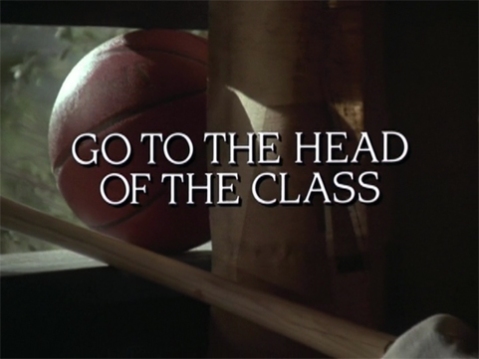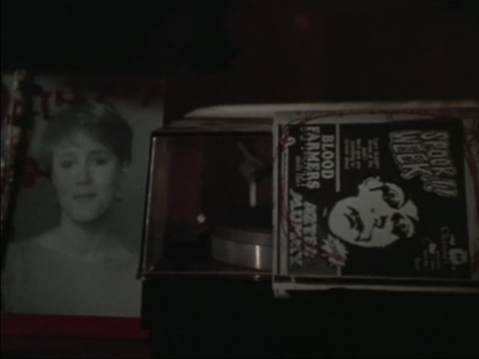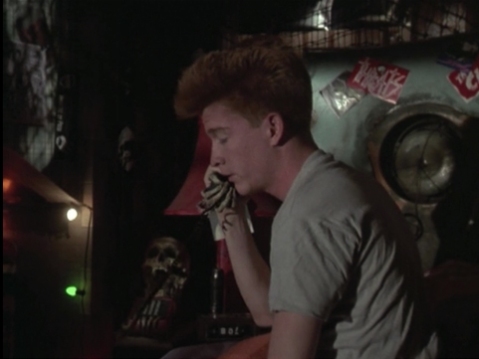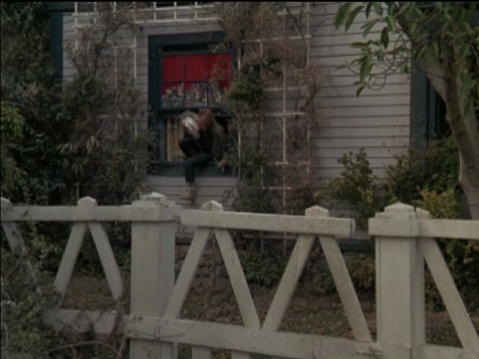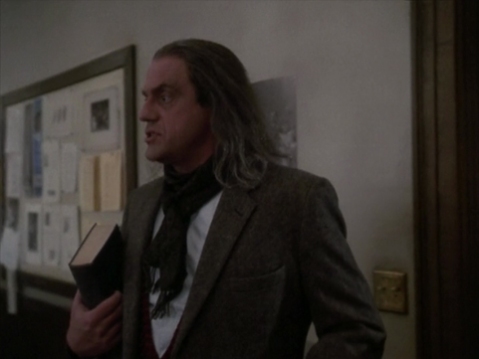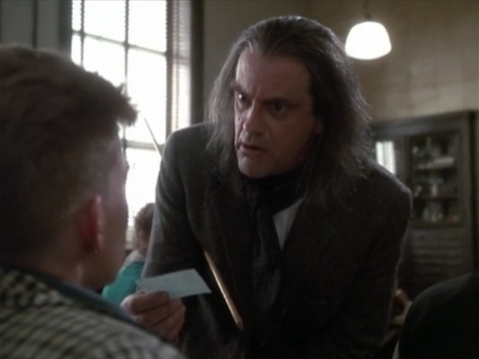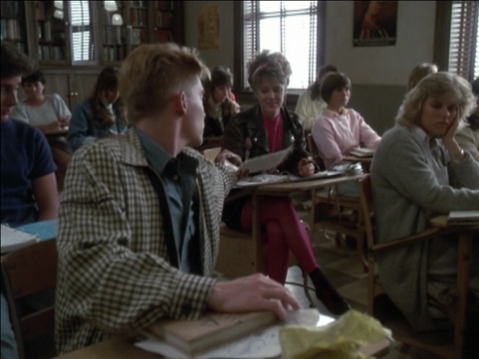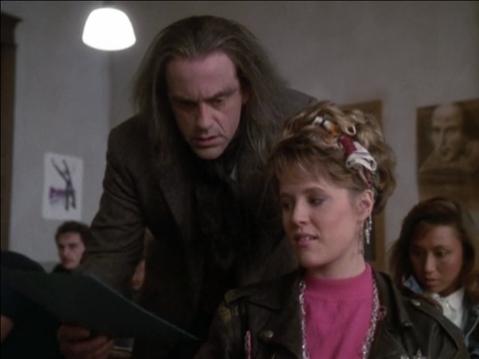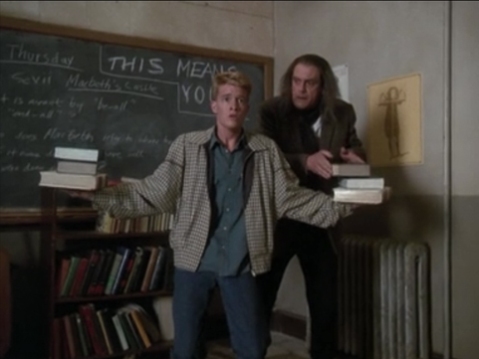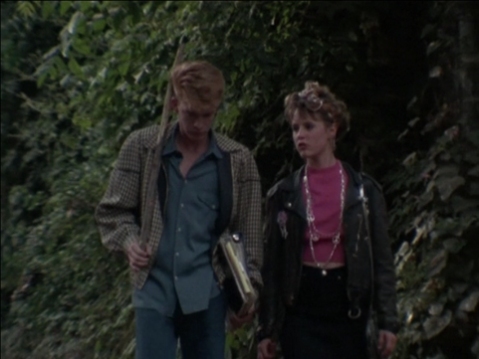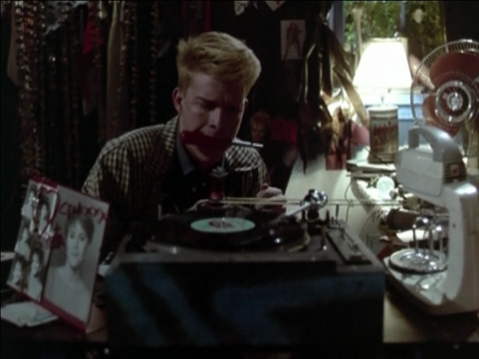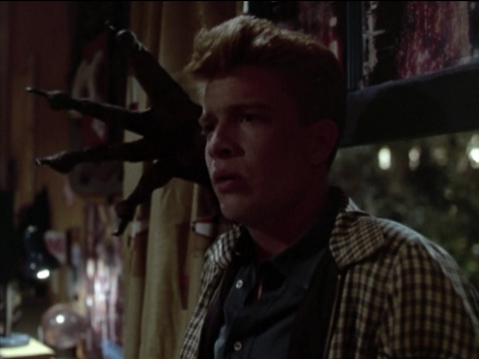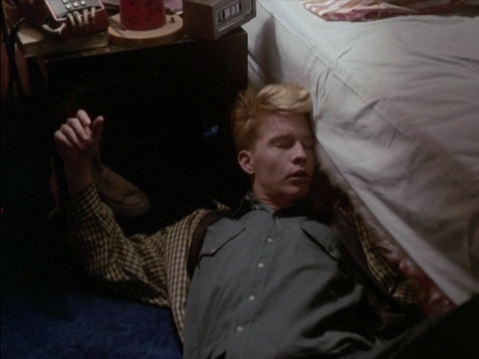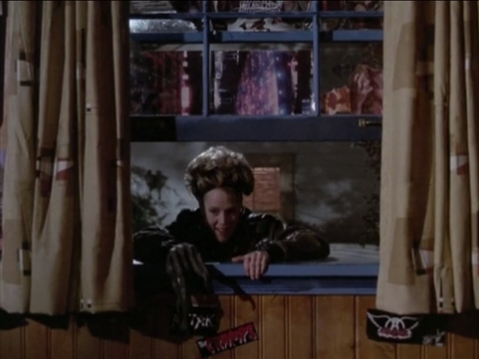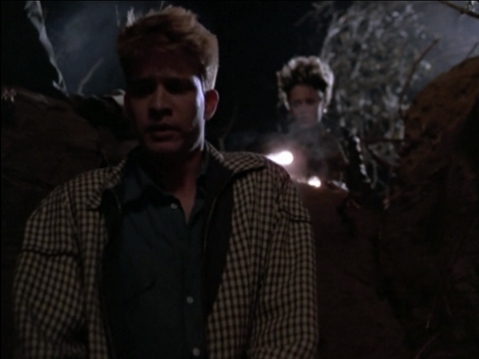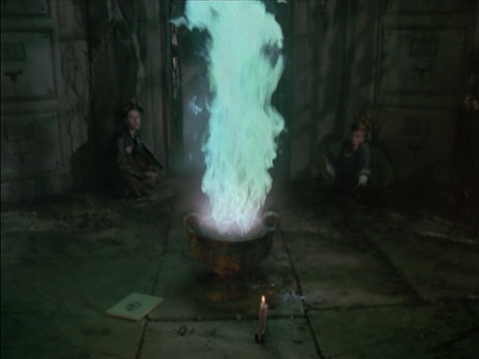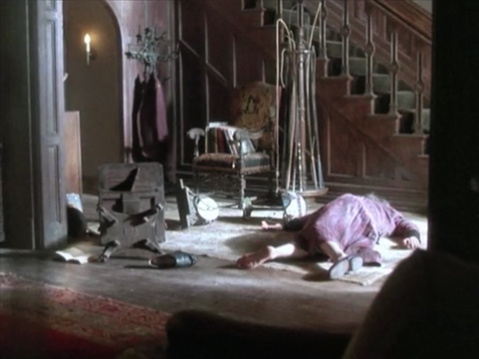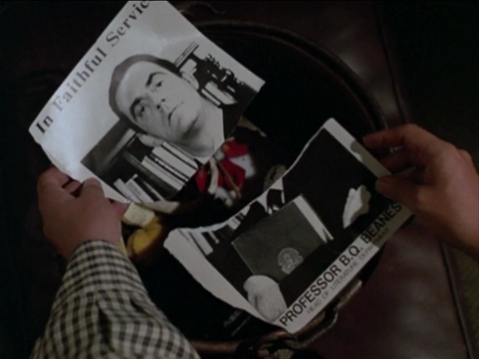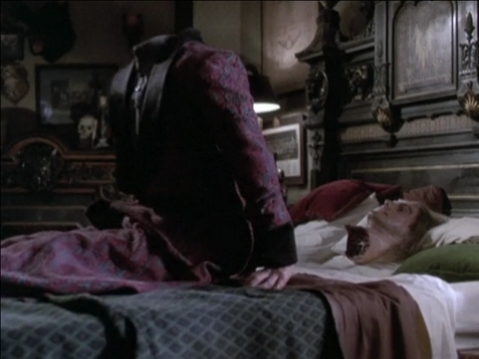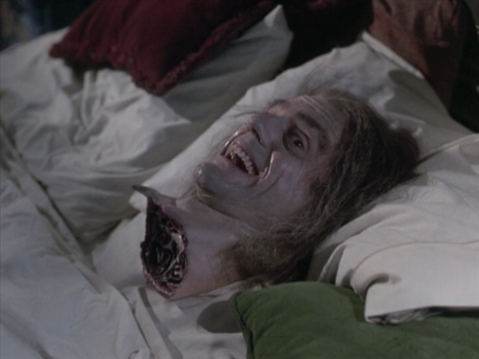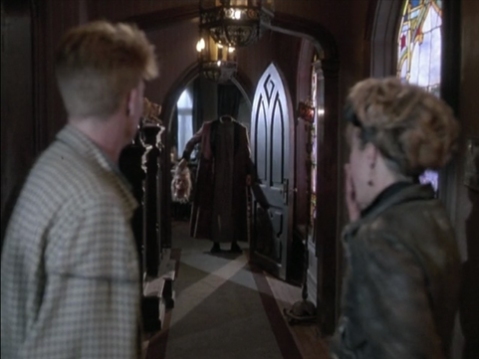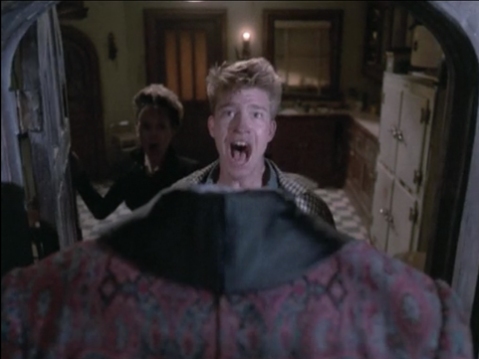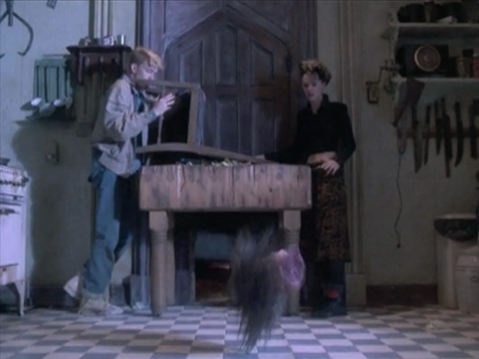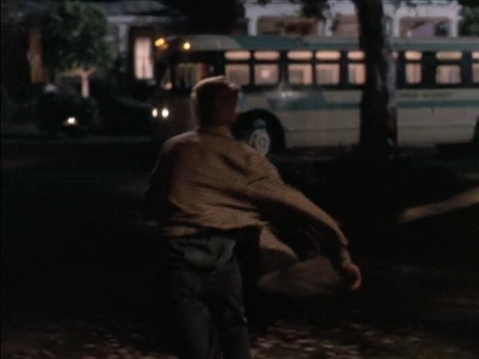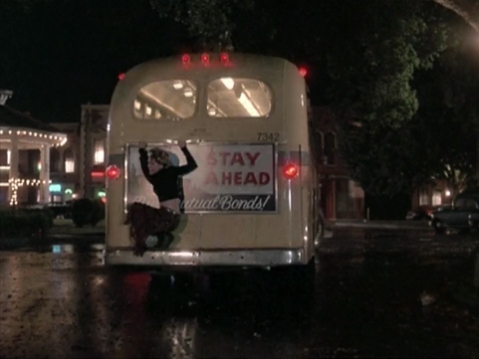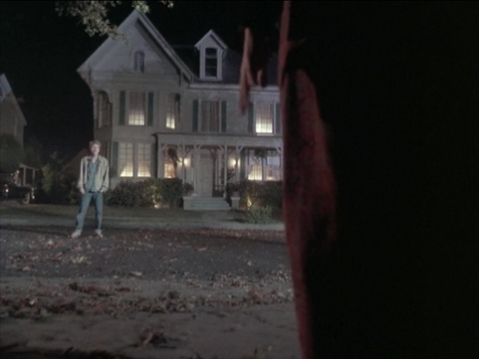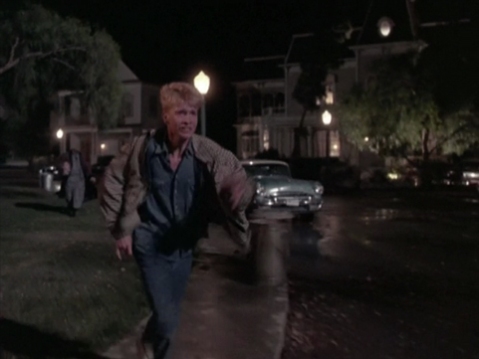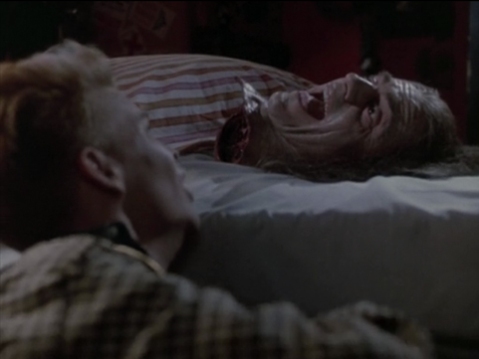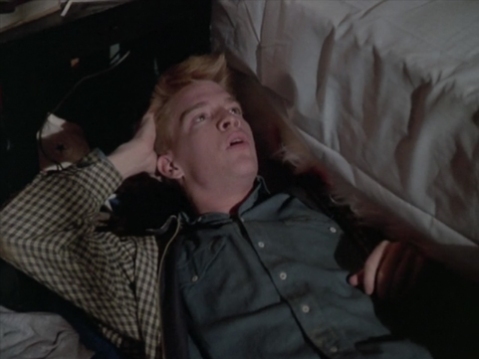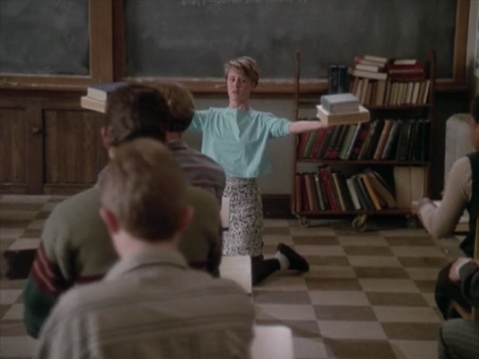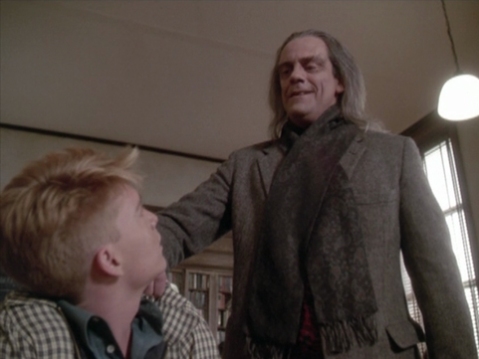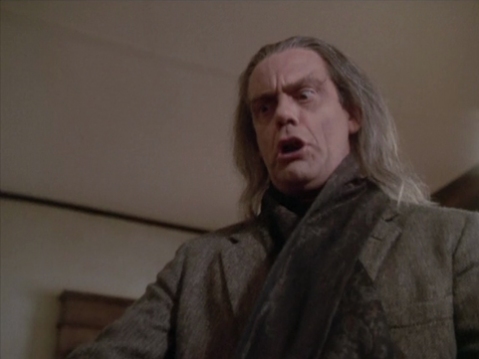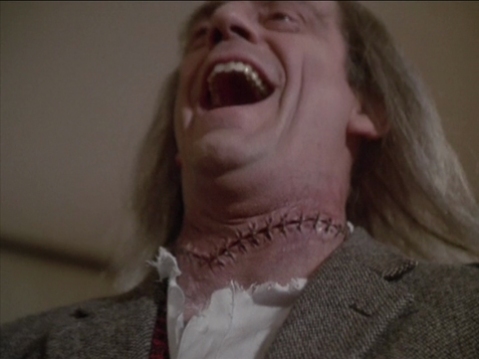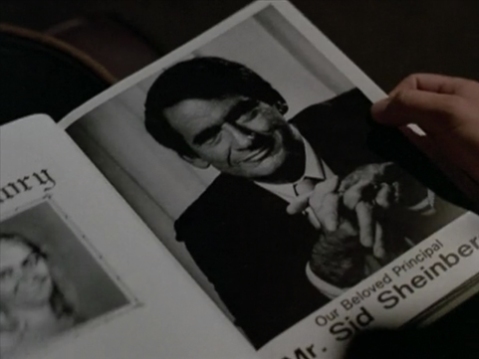Movie Review: Flight

_________________________________
To some people, there comes a time when the filmmakers we watch, grow up.
Take Steven Spielberg. While he wowed us with films like Raiders of the Lost Ark and E.T., he also wanted to explore more dramatic territory in the 1980’s. His early attempts with The Color Purple and Empire of the Sun netted him mixed reactions from many. Of course, it wasn’t until his bleak-yet-powerful release of Schindler’s List in 1993, did Spielberg truly begin to set foot into a more serious realm.
And now, that time appears to have come for director Robert Zemeckis.
The late 1990’s brought us several films where Zemeckis attempted to put us into more serious realms of storytelling, from his adaptation of Carl Sagan’s Contact, to the one-man-journey of Cast Away. While both films featured great performances from their leads and a wonderful use of ‘invisible effects,’ neither really got into the deep, R-rated territory that Spielberg had entered into.
Well, after the last decade in which he attempted to pioneer motion-capture in films (with The Polar Express, Beowulf, & A Christmas Carol), Zemeckis has returned to the land of live-action…and grown up.
Compared to the rest of Zemeckis’ filmography, much of Flight’s story and tone differs greatly from the live-action fare we saw him pull off in the 1990’s. The use of visual effects is kept to a minimum, and we’re meant to focus on the more human-element of the story.
Flight also marks Zemeckis’ first R-rated film since 1980’s raunchy comedy, Used Cars. However, the material in his latest film shows a story that is more dramatic. For those of you who have seen the first movie trailers, this is one of those films where that trailer is not going to do the film justice. If you think you’ve seen the entire movie in that little preview…you haven’t.
Pilot Whip Whitaker (Denzel Washington) starts a new day, making a short flight from Florida to Georgia. However, things take a violent turn when the commercial jetliner he’s co-piloting suddenly malfunctions. In a daring maneuver, Whip manages to pull off a miraculous landing, with minimal casualties. However, while many are quick to hail him as a hero, new questions slowly begin to surface regarding Whip.
There’s early award-season buzz regarding Denzel Washington’s turn as the film’s main star, and after seeing his performance, one can see why. The role Washington takes on as Whip is one that I think many would love to have landed, and seems to be based largely on subtlety. Steely eyes protrude from under his brows, as if attempting to shut you out from seeing what is going on inside his head. His character in Flight is one that you will question, and hopefully, grow concerned for.
Washington is buoyed by a rather renowned group of actors, such as Bruce Greenwood, Don Cheadle, and Kelly Reilly. There’s also a fun little ‘cameo’ of John Goodman playing a close ‘confidante’ of Denzel’s character. While Washington’s role as Whip is front and foremost, each of the actors mentioned gets a chance to shine as well, with Kelly Reilly standing out pretty quickly. When we first encounter her, she is one of the few enigmas in the structure of the film, but as it continues onward, she soon ends up becoming someone we can’t stop watching or listening to.
One thread weaved within the underbelly of the story, is the circumstances of the crash aftermath. Talk of God does figure into the story in several areas: does God pre-determine what will happen? Is Whip’s work part of His plan? Some choose to believe this, and others don’t. The film leaves this idea left open to the audience, yet doesn’t feel quite as ‘subtle’ as the God-vs-science talk in Contact. One such instance is where Whip goes to visit his injured co-pilot, whose wife sits nearby, parroting ‘Praise Jesus’ when the conversation turns to her husband’s survival.
Except for a few minor sequences, it feels that much of the special effects effort was placed into the creation of the film’s major plane crash sequence. Here is where Zemeckis’ camerawork seems to shine outside of the normal action films we see these days. Unlike Paul Greengrass-style shake-until-you-vomit cinematography, the camera is prone to very minimal shaking during the incident. We do get some turbulent camera movement, but we can always focus and know where our actors are in a scene. Many of us talking to Zemeckis in a post-Q&A following the film seemed in agreement that his ability to put us in the experience but not rattle our brains, was really well done.
Musically, composer Alan Silvestri returns as part of Zemeckis’ gang, but much like his work in Cast Away, the music he composes is comprised of just a few minimal pieces. Instead, Zemeckis puts most of the film’s music into the hands of various artists, using familiar tunes to encapsulate various moments, a technique similar to the music use in Forrest Gump.
One could almost call this the rebirth of Robert Zemeckis, but in truth, that’s not really being fair to him. His attempts to energize the landscape of motion-capture were valiant efforts, and I still believe he deserves some respect for that. Flight should simply be seen as another step in his continuing growth as a film director. With its streamlined budget and character-focused plot, several fans of the film I attended the screening with wondered what he could accomplish after this. If Flight does well, one can imagine him putting his skills into tackling another film that is just as dramatic and ‘adult’ as this one.
Rating: A-
_________________________________

“Flight” was screened as the closing night film of the Chicago Film Festival. After the screening, film festival president Michael Kutza (left) presented Robert Zemeckis (right) with the festival’s Founders Award. After a few words, Zemeckis did a small Q&A for 10-15 minutes.
Toy Review: Derpy Hooves vinyl figure

Exclusive Funko vinyl figure, only available at Hot Topic
With any major series or worldwide phenomenon, the fandom of such things often find some way to adopt a character, and push that character into the stratosphere of popularity.
Take Star Wars. George Lucas had wanted to make the bounty hunter Boba Fett a simple, silent-but-deadly bounty hunter intent on capturing Han Solo. Instead, Fett’s popularity opened a new realm of fandom related to speculation, expanded universe stories, and much more.
When it comes to the recently-popular revamp of My Little Pony, the show’s growing fandom rallied around a character who was essentially a mistake. Online fandom soon began to follow a grey-colored, blonde-haired pegasus pony with crossed eyes, who began to be known in the MLP fan community as Derpy Hooves.

The scene from the first episode of “My Little Pony: Friendship is Magic,” that launched Derpy’s fanbase.
Once the show’s creators found out about how popular she was with the fans, they began to give her minor background appearances (ala Where’s Waldo?). In Season 2 of the series, the showrunners gave her a few minutes in the spotlight, and a cute-yet-dopey voice to match her try-but-often-clumsily-fail persona.
However, those few minutes roused the ire of some parents, who contacted Hasbro to say that Derpy’s name, crossed eyes, and dopey actions were seen as offensive to disabled persons. And with that, Derpy’s moment was re-edited, and her television name was now to be Ditzy-Doo.
Specialty retail stores like Hot Topic would keep the merchandising of Derpy alive with t-shirts and hats, but many fans wanted a figure of her that could stand next to the others that Hasbro had made.
They got their wish in the Summer of 2012, when Hasbro released Derpy as a San Diego Comic-Con exclusive. Packaged in a special box with no name on it (maybe Hasbro was afraid to use the fan name for fear of more parental teeth-gnashing?), the figures quickly sold out, and reached prices of $90+ on eBay. While many wanted a Derpy Hooves figure, some of us had limits on just how wide our wallets would open up.

Proportion comparison between Derpy in her animated form, and vinyl figure form.
And then, salvation came in vinyl form, from Funko. Known for their numerous, block-headed/beady-eyed interpretations of pop-culture figures, Funko has entered the arena of My Little Pony merchandising with its recent releases of Derpy Hooves and Rainbow Dash to Hot Topic stores. Personally, this could be just the ticket for some of the older, more die-hard fanatics. While many love the series, it’s safe to assume that Hasbro is not going to devote much of their marketing power to target older fans. This seems to be the niche that Funko is filling, and with these recent releases, I think they may definitely have a good source of new income on their hands.
The packaging Funko has wrapped their pony figures in is definitely different from the packaging one is used to when it comes to MLP toys from Hasbro. The biggest shock: not a single bit of pink on the packaging! I don’t think any other MLP products have even had this much black on their packaging.

Behold…the pony with no name!
Unlike the vinyl figure release of Rainbow Dash, Derpy has no name on her packaging. Instead, she is titled with an ‘I Heart’ moniker that seems like code for fans of the series. Though it does make me wonder what non-MLP fans or young kids will think her name is. It should be noted that even though her name shows up nowhere on the packaging, she did ring up in the system as Derpy Vinyl.
Once out of the package, Derpy is a very solid figure. If she hits the floor, she’s going to make alot of noise, or hurt somebody.
Given her non-Hasbro production, Derpy’s size is slightly larger than the regular-sized ponies. Most impressive about Funko’s figure is the sculpting that has been done. Derpy’s body is more in scale and design to the original character work on the show, with legs that taper closer to the body, and wide hooves. Unlike Hasbro’s toys, this figure comes with non-grooming, sculpted hair, which definitely helps those of us who want a figure with volume in her hair.

For those looking for super-accuracy, you’ll have to keep wishing. Paint applications on her eyes do not gradate from orange to yellow, and her ‘cutie mark’ in the form of several bubbles, only adorns her right flank, and not both as in the cartoon. Also, the sweep of her mane only goes down her left side, and not down either side as in the cartoon series.
One area where the sculpting gets iffy, is in the front-view of Derpy’s face. In the cartoons, the front of the face is ‘cheated’ by being a simple oval shape. Here, we have some ‘blocky cheeks’ and some rounded dimensionality that warps the eyes slightly. But, this is often a side-effect when one takes a 2-dimensional character, and makes them 3-D.

Does Derpy have…stretch marks?
Assembly of the figure is made up of the separate hair pieces, the head, wings, and body. Unlike the smoother vinyl textures of Funko’s other figures, Derpy’s is not perfectly smooth. If you look at her up close, you’ll see some slight abnormalities. As well, the area where the head joins to the neck is not a perfect/clean line. Btw, in case you were wondering, no, her head does not turn.
It isn’t the greatest My Little Pony fan-figure, but I think it comes incredibly close. I’m sure word-of-mouth about these Funko figures will spread quickly among fans and customizers (who will most likely buy extra figures to disassemble and fan-make other characters from the series).
Derpy (and Rainbow Dash) currently retail for $14.50 (plus tax) at Hot Topic.
Word is, a third pony may be making its way to Hot Topic shelves from Funko soon. On Funko’s Facebook page, they did say that more ponies would be making their way into collector’s hands in 2013, and they would not be just Hot Topic exclusives. I’m sure this will give some hope to adult collectors of the series, leaving them hope of seeing fan-loved background ponies that most likely would not be produced by Hasbro.

“A-ba-derp aba-derp a-ba-derp, that’s all folks!”
Blu-Ray Review: Little Shop of Horrors – The Directors’s Cut

_________
On the twenty-third day of the month of September,
In an early year of a decade not too long before our own,
The human race suddenly encountered, a deadly threat to its very existence.
And this terrifying enemy surfaced,
As such enemies often do,
In the seemingly most innocent, and unlikely, of places.
__________
This October, there were numerous titles on the lips of many people regarding Blu-Ray discs. These included E.T. The Extra-Terrestrial and Prometheus, But for myself and many others, there was one release that just trumped them all as a must-have: Little Shop of Horrors – The Directors’s Cut.
Before they found worldwide acclaim in helping with Disney’s second animation renaissance, Howard Ashman and Alan Menken had their first major success off-Broadway in 1982, when they adapted the Roger Corman film Little Shop of Horrors into a stage production. Producer David Geffen then set out to make a film of the production, and landed Frank Oz to direct. At the time, Frank was known for working with Jim Henson as a puppeteer, and later as co-director on The Dark Crystal and The Muppets Take Manhattan. Little Shop would be Frank’s first solo directorial outing, but in a way, the film’s semi-crazy premise involving a blood thirsty, world-dominating plant seemed just the thing as he started to make his way as a film director.
As well, Frank wasn’t that far from some of his Henson collaborators. Though the film does not credit Jim Henson’s Creature Shop for the Audrey II plant effects, Frank borrowed many craftsmen and puppeteers to pull off everything from the cable-controlled ‘baby’ plant, to the enormous one-ton monstrosity at the end of the film that took 60 puppeteers to operate.
Little Shop of Horrors is a production that is one of those strange ‘concoctions’ of a film. It’s a 50’s B-movie with its blood-thirsty plant, a 60’s period piece with a Greek chorus of girls in the vein of The Supremes, and to wrap it up, connections to the German story of Faust.
The film’s screenplay, written by the stage production’s bookwriter/lyricist Howard Ashman, retains much of that production vibe, but it definitely feels that Howard knew that what worked on an open stage, was going to need some tweaking with moving cameras and multiple sets.
I’m ashamed to say I’ve never seen a stage production of Little Shop, so I won’t be firing off a comparison list on what the film hits and misses…with the exception of one little thing that this Blu-Ray release brings to light.
__________
The Director’s Cut
To many who have never seen a production of Little Shop, or read up on the history of the material, the ending that was in the original 1986 release, was not ‘true’ to the original production, or the intended ending. Much like the story of Faust, Seymour’s ‘deal with the devil’ (aka the plant, Audrey II) would not only take the life of an innocent girl, but his own life as well.
Test audiences loved the film, until the very end when the boy and girl they were so focused on, ended up as plant food. The final test-audience scores didn’t even merit the possibility of a release, so the final ending in which Seymour electrocutes the plant to death was created. Seymour mans up, gets Audrey, and the two live happily ever after (even though he’s responsible for feeding Orin Scrivello and Mr Mushnik to the plant).
Many wondered about the original ending for years, which also included a big B-movie extravaganza in which the the plants take over the world ‘Godzilla-style.’ Still-images were shown in special effects magazines like Cinefex, but noone ever expected the lost ending to resurface.
Then, in 1998, Warner Brothers decided to release the film on DVD. When they contacted Frank Oz if he had any parts of the original ending, he produced a copy of the black-and-white test-screening footage, which ended up being put on the DVD as an extra. However, David Geffen requested WB pull the remaining copies off the shelves asap, and replacements were made minus the test footage. Rumor was that Geffen either didn’t want to acknowledge the original ending, or that he had the color negatives WB wanted, and wanted to release a true director’s cut at some point.
The original cut of Little Shop was seen as the holy grail among some film viewers over the years. Of the discs that were purchased before the recall, some made their way onto eBay, and fetched upwards of $200. In recent years, the footage even ended up on several people’s Youtube accounts.
Some have said the ‘plants-taking-over’ ending doesn’t quite work, but if you’ve seen some of the stuff that Frank Oz did with Jim Henson, it does work in its strange way. Plus, the Director’s Cut can finally show the impressive model-work that was often seen in still photographs. Millions of dollars were spent to build the miniature landscapes and detailed vehicles that were eventually destroyed in the onslaught.
This new cut of the film was made after searching all of the Warner Brothers vaults for color material. Finding almost every single piece of footage, it put to rest the rumor that Geffen was the only one who had the color negatives.
The Director’s Cut does follow the original test-screening cut to the ‘T,’ but it also feels that if that original ending had been used, they would have spent the final months before the big release, making the monster-movie ending a little ‘tighter’ in places. It almost feels like disaster-porn, given how after awhile, we get lots and lots of images of building walls blowing out, and being crushed into powder.
One side-effect to putting this ending together, is that a new audio track had to be mixed for the ending, which was mainly music and dialogue with no sound effects. The added sound effects work pretty well, and in some scenes, help sell the violence of the actions in some scenes.
Some have voiced some displeasure that in the scene where Seymour meets his fate within the gaping jaws of Audrey II, that he appears to be screaming, but we hear no sound. I find the scene plays well with just the music, kind of like we’re inside Seymour’s own personal hell as he meets his demise.
One item that has been dubbed in in later scenes, are the rampaging plant’s laughter. It doesn’t quite sound like Levi Stubbs (who voiced Audrey II), but unless that’s one of your pet peeves, it’s rather unnoticeable to the common person.
__________
My Thoughts on The Film(s)
One of the great things that Warner Brothers has done, is issue the Blu-Ray with both the theatrical and director’s cuts. I find this a great bargain, as some may prefer one cut over the other, or some may choose to go back-and-forth, analyzing how each of them differ in tone.
When considering both cuts, it’s like coming to a fork in the road. There’s one school of thought that these poor kids (Seymour and Audrey) are trapped in a place they’ll never escape from, and the audience wants them to succeed. Such downtrodden, meek individuals can often win over an audience, who wants them to reach their dreams. As well, Audrey’s dream sequence shows the dreams of a sweet girl who wants a happy and better place.
On the other hand, one thing that can probably cloud the judgement of the audience, is regarding the death of Orin, the masochistic dentist. Even though some can believe him to be a monster that deserved to die, Seymour commits a terrible sin by killing him, thus starting off the series of chain reactions that leads to bigger things, but leaves him with unnerving feelings of guilt for what he’s done. As well, Seymour is in danger of losing everything when Mr Mushnik the flower shop owner finds out what he’s done. However, Seymour can’t bring himself to lose his chance with Audrey, and gets Mushnik eaten as well.
After having seen both cuts, it’s hard to go back to the theatrical cut once I saw the original. To me, I prefer the heart-break as Audrey dies in Seymour’s arms, and is then consumed by the plant. I was surprised when watching the scene where Seymour presents her body to the plant, I started to get emotional. There’s a little moment where as she slides into the plant’s mouth, we see her hand just brush the outer lip of the plant. Seymour attempts to reach for it, to touch his beloved one last time, but it slides past the plant’s lips, and she’s gone forever.
I also like the rather dark humor of the director’s cut ending, where we see that miniature Audrey II’s have been grown and placed on store shelves across the country, with the masses of people clamoring for their own. It put me in mind of the mad dash in the last 30 years for things like Cabbage Patch Kids, Tickle-Me Elmo’s, and Beanie Babies. Though at least those toys weren’t bent on consuming human blood to grow for world conquest.
While I don’t outright hate the theatrical cut, I’ll be fine with the director’s cut from now on. The 1980’s had some films in which early testing changed a film’s darker tone (like Terry GIlliam’s Brazil). The atmosphere of filmmaking feels a little like today and some studios. The only difference is that in today’s audience, there’s the push to edit out blood and gore to make a film more ‘profitable’ by pushing it into PG-13 territory.
__________
Special Features
There isn’t that much new in the way of special features, unless you count the Director’s Cut as one of them. With the exception of a re-edited feature and a small retrospective, it’s almost all been seen before.
-Digibook Packaging (Blu-Ray only) – Several of Warner Brothers’ Blu-Ray titles have been released in this format, with the disc encased in a small book. Each book contains pictures and information about the film. There’s also a small insert containing a personal message from Frank Oz. Unlike the Digibook releases I got for Dr Strangelove and The Matrix, the design work on this release is a little higher in quality. Images intermingled with the text are of a glossy nature. The text on the pages covers a little on the making of the film, the original ending, quotes and dialogue from the film. A very nice cornucopia of information.
-Original Theatrical Commentary by Frank Oz – Recorded for the 1998 DVD release of the theatrical cut, Frank does a solo commentary, explaining some of his filming decisions, camera set-ups, and even some little things that peeve him. Notable is how certain sets and even actor’s movements were often dependent on musical beats, and how many there would be in a scene.
-Frank Oz and Little Shop of Horrors: The Director’s Cut – This is the only new special featurette included. Frank lays out for the viewer, the whole sad story of what brought the original film to be cut into its final form. We even get some interview snippets from Richard Conway, who was responsible for much of the model work that went into the excised ending.
-A Story of Little Shop of Horrors – This segment, originally made around the time of the film’s release, gives a 23-minute summary of the evolution from Roger Corman B-movie, to Off-Broadway hit, to big-screen return. We get candid snippets from the cast, producer David Geffen, and director Frank Oz. Also, we get to see the creation of the sets and Audrey II, as well as some scenes of the crew operating the puppets, which are a plus in my book. What’s a little sad, is that even though it is a musical, we don’t get any clips of Howard Ashman, or Alan Menken talking about developing the Off-Broadway production, or even Howard talking about translating the production to the big screen.
Outtakes and Deleted Scenes – These are more like a goulash of scenes. We see flubbed lines, crew members posing with the three singing girls, and numerous effects shots being staged or filmed. There’s even a couple cheeky shots in there as well. There was even supposed to be a dream sequence for the song The Meek Shall Inherit, and we see a few seconds of the crew dancing through the smoky atmosphere. There’s also a funny scene where we see two enormous Audrey II’s terrorizing New York, and off to the side, an enormous human hand sprinkling dust and debris down. The scenes also have a commentary track with Frank Oz giving his thoughts.
-Director’s Cut Ending with Commentary by Frank Oz – The audio’s (kinda) the same, but the image isn’t. This was the audio commentary that Frank recorded in 1998 for the DVD release, where he discussed the original ending, over the black-and-white footage he provided for the DVD release. Back then, the track that was used was temporary audio with just basic vocals and some music. It may sound odd when Frank begins saying things like ‘we would have music here,’ and ‘there would be plenty of sound effects there,’ and you can faintly hear them from the newly-revised ending.
– Movie Trailers – We get to see both the Teaser and Theatrical trailers. The Teaser trailer attempts to look like a B-movie, with some key words flying at the audience.
__________
In Conclusion
You’re never going to please everybody. They couldn’t do it back in 1986, and even with this set, they won’t be able to please those who have waited over 25 years for this release.
I think some would have loved a retrospective with the cast and crew, or even a feature discussing the late Howard Ashman. Howard has been mentioned by name in many of the making-of specials I have from Disney (such as Waking Sleeping Beauty), but Little Shop was one of the first big commercial successes he had before he was eventually brought into The Walt Disney Company.
Even so, for those of us who have never owned the film, or had the copy with the black-and-white ending, it is definitely worth it to me.
In the last few months, I’ve been going around the internet just looking for information about Little Shop of Horrors, and I thought I’d include a few links here:
HowardAshman.com – Maintained by his sister Sarah, if you were ever curious to know more about Howard Ashman, this is the place.
Mondo Musicals – The owner of this web blog, has been a huge fan of Little Shop of Horrors for quite some time. If you search his page, you’ll find plenty of articles, ranging from analyzing the Roger Corman film, to pictures of some original props he obtained from a puppeteer who worked on the film!
__________
Final Analysis
Director’s Cut of the film – B+
Theatrical Cut of the film – B
The Blu-Ray package (with both film versions, digibook packaging, and special features) – B+

One memorable scene from the original Roger Corman film, was Jack Nicholson playing a patient who enjoys the dentist’s painful procedures. In the 1986 film, Frank Oz does an homage to this scene, using Bill Murray as the pain-loving man named Arthur Denton. Here, Denton grows curious as a Mother and Daughter exits Orin’s room. FYI, the little girl is Heather Henson, Jim Henson’s daughter.
Book Review: The Men Who Would Be King: An Almost Epic Tale of Moguls, Movies, and a Company Called DreamWorks

Reading Nicole LaPorte’s The Men Who Would Be King, was almost like going back for a high school reunion, and remembering the old days. As I made my way through the pages, visions of my entertainment-obsessed teen years quickly came back into view.
It was big news in the fall of 1994 when Steven Spielberg, Jeffrey Katzenberg, and David Geffen sat down in front of reporters, and announced they were going to be founding the first new American film studio since Hollywood’s Golden Age. I remember the Time Magazine cover with the three partners, articles about their grand plans for a 21st century studio in Playa Vista, CA, and of course, the company’s quest to break out of a monotonous studio system, and make a utopia where artists were free to express themselves based on ideas, and not marketability. Quality would be the mantra for the studios’ film, television, music, and digital media divisions. However, the dream never quite solidified, and the studio found itself struggling, before soon throwing up its hands and creating less-than-stellar product just to try and stay afloat (remember the 2003 sports drama Biker Boyz? Anyone?).
When compiling the information for her book on the rise and fall of Dreamworks SKG, LaPorte (a former editor for Variety) first attempted to get the story straight from the founders themselves. As one can expect, they didn’t give in to her requests. Of those who were willing to talk, some are mentioned by name, and many are simply titled ‘source.’ Those listed as a ‘source,’ were often very cautious about talking about the company. One meeting that LaPorte had with a ‘source,’ sounded similar to the scene in JFK where Jim Garrison (Kevin Costner) met an informant named “X” (Donald Sutherland).
LaPorte quickly starts building up character archetypes with the three moguls. Spielberg is portrayed almost like a genius-level child, whose ideas and creativity are nurtured to the point where his sensitivity to bad news and negativity is shielded by everyone around him. Katzenberg is the guy who is seen as very quick and always in motion, but cross him, and he isn’t so forgiving. Geffen had always been the enigma whenever I heard the ‘SKG’ moniker. Of the three, LaPorte paints him in a more serious, business-like light. Geffen quickly becomes the person doing most of the heavy-lifting behind the scenes, and is pretty quick with the expletives.
In the first 15 pages, I started having uncertain flashbacks to Ben Mezrich’s The Accidental Billionaires (the unauthorized biography on the founding of Facebook).As the journey into her book began, LaPorte would try to intricately paint scenes with words. However, her work in crafting entertainment-related articles for Variety seems to have helped her writing this book, as I soon got over my fears, and eagerly settled in to reading her story. Unlike Mezrich, LaPorte has plenty of articles and sources regarding her subject, to make the text ‘flow.’
Even so, one thing that may bog down some readers, are the endless amount of names that have played a part in the story of Dreamworks. Many of them that were showbiz names (like Cameron Crowe, Sam Mendes, & Robert Zemeckis) I already had knowledge of. But when it came to some like Paramount Pictures CEO Brad Grey, I had a little trouble comprehending. Then again, maybe it was my inner fanboy reacting negatively as LaPorte pegged Grey as one of the men who seemed disrespectful of Dreamworks.
Dreamworks SKG, as a start-up studio, found itself in a world much different than the early 20th century studios that Spielberg and his cohorts attempted to emulate. In a world where merchandising and home video catalogue titles can help fatten the bottom line of a studio, the start-up had none of these things. However, the ‘K’ and ‘G’ of the studio would often play up their wild card: The Big ‘S.’ Katzenberg and Geffen would often have Spielberg as their poster-boy, and Katzenberg could often sway people into joining the new company by giving them a few moments to chat with Steven. This led to investors showing interest in the company, and even helped Katzenberg lure away some artists from Disney, as he began to start into Dreamworks‘ animation division.
Many people were expecting the studio was going to come charging out of the gate with plenty of product shortly after the big announcement. As it stood, it would take almost 3 years before anything with the Dreamworks logo hit theaters, with only a select few being truly made by Dreamworks. Many of the films released were co-production deals with other studios, leaving much of the profits (if any) split in a way that did not leave the company with much to show for its efforts. In fact, it’d be almost 7 years before the studio would have a hit film’s grosses all to itself, in the form of 2001’s Shrek.
As the productions from the company start to enter into the book’s chapters, LaPorte picks and chooses among many of the studio’s live-action films. Naturally, she goes whole hog on some of the films being directed by Spielberg (focusing on his more dramatic directorial films like Amistad, Saving Private Ryan, & Munich). Some films are chosen for their complex productions (and cast and crew), such as The Peacemaker, Gladiator, and Dreamgirls, which in itself becomes a chapter that really envelopes David Geffen, who had wanted to make the musical into a film if it could be done right. Small shout outs are given to plenty of other film titles, usually the ones that barely made a blip on the box-office radar (such as Paulie, and Small Soldiers).
Animation fans (like myself) will most likely be drawn into the chapters and stories about Dreamworks Animation. Sources chronicle everything from Jeffrey Katzenberg’s hands-on approach during the production of Prince of Egypt, as well as some instances where when an animated film tanked (like 2000’s Road to El Dorado), Jeffrey seemed quick to blame everyone but himself for the film’s failure (on El Dorado, word was he even blamed the film’s songwriter, Elton John).
A couple chapters are also devoted to the now-defunct Dreamworks Interactive, and Dreamworks Records labels. Both of them are intriguing in how Spielberg attempted to bring his creativity to the Interactive unit, and how singer Nelly Furtado’s career was nurtured through the Records label, in the face of the changing music/radio landscape of the early 2000’s.
Reference is even made to Dreamworks Television, which found itself with one major hit on its hands, the Michael J Fox-starring Spin City. LaPorte also chronicles the rise and fall of the studio-produced Freaks and Geeks, which has since earned a cult-following on DVD.
We even learn of the studio’s struggles to go for the gold (aka The Academy Awards). In the wake of the eye-opening Oscar Race ending for 1998 (in which Dreamworks took home Best Director for Spielberg’s Saving Private Ryan, but Best Picture ended up going to Miramax’s film Shakespeare in Love), LaPorte structures what can best be described as a true campaign war, led by Dreamworks marketing executive Terry Press. Not wanting to be shown up by Miramax again, Press steps up her game, and ended up securing Dreamwork’s Best Picture wins at the Academy Awards for 2000-2002.
LaPorte’s experience writing for entertainment publications definitely helps move the story along, but she has a couple little quirks here and there. One of them is the occasional flinging around of Yiddish words when talk turns to Spielberg. As well, some of her facts aren’t completely infallible. At one point in discussing a spat between Dreamworks and Mike Myers, the book mistakenly says that it was Myers who starred in the 2000 film, The Grinch, not Jim Carrey.
In the end, LaPorte chronicles a start-up that with its big-name star power at the helm, could almost be considered like our current banking system: Too big to fail, or in the case of its 3 namesakes, too famous to fail. The hype was ratcheted so high, that you were either rooting for the underdog, or hoping for them to fall flat on their faces. In the end, numerous influences chipped away at the new studio. From outside influences like business models and the economy, to inner turmoil among producers, studio heads, and much more. Noone said running a studio would be easy, and LaPorte’s book never tires of leading its readers on a wild rollercoaster ride.

